Why does drought recovery matter?
- When a long dry spell ends, you might find a lawn is not recovering as you expected
- Once grass is brown, patchy, and brittle it often reaches a point where it is no longer living.
- Soil that is hard and cracked can become hydrophobic – meaning it repels water rather than absorbing it
- Weed and moss invasion usually follow periods of drought as the conditions suit these plant types.
- Without intervention you are likely to have a patchy, weedy and mossy lawn next year.
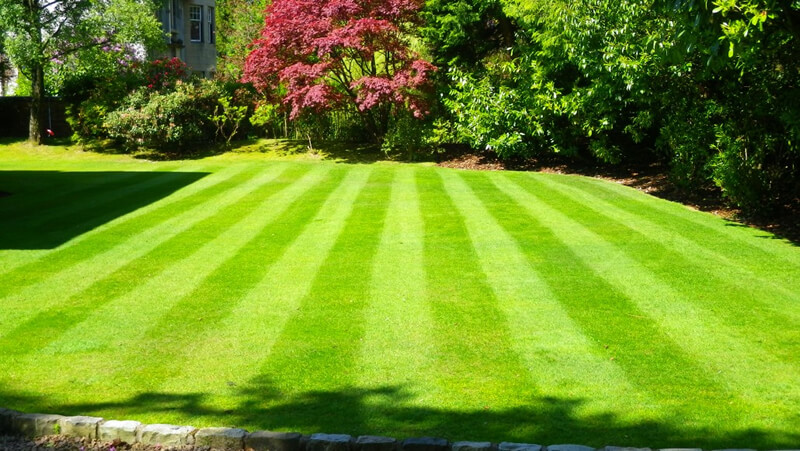
Will my dead lawn recover when it rains?
Is repairing my lawn after drought stress even possible?
How do I fix my drought damaged lawn?
Can I fix a drought damaged lawn myself?
When is the best time to recover a drought‑damaged lawn?
Our step‑by‑step lawn recovery process…
We begin with a comprehensive lawn assessment to ensure we understand exactly what is needed.
Lawn aeration to relieve compaction, improve airflow, and allow water and nutrients to penetrate deep into the root zone.
Scarification to power-rake the surface of the lawn, removing dead grass than thatch to ensure rapid recovery.
Overseeding directly into the existing lawn to fill in gaps, increase density, and strengthen the lawn’s resilience. We use modern grass varieties that are hard-wearing and more drought resilient.
A fine layer of top dressing can be applied over the seeded areas to protect the seed, hold in moisture, and create the ideal environment for germination.
Water retaining wetting agents are applied to soils that repel water, helping moisture move down into the soil — right where it’s needed.
We apply soil conditioners, formulated to feed the soil microbes which are likely to be depleted due to the lack of soil moisture
Specially formulated feed encourages strong root development and healthy new growth without forcing the lawn during a stressful period.
We provide ongoing tailored advice on watering, mowing, and care — and return for follow-up visits throughout the seasons if needed.
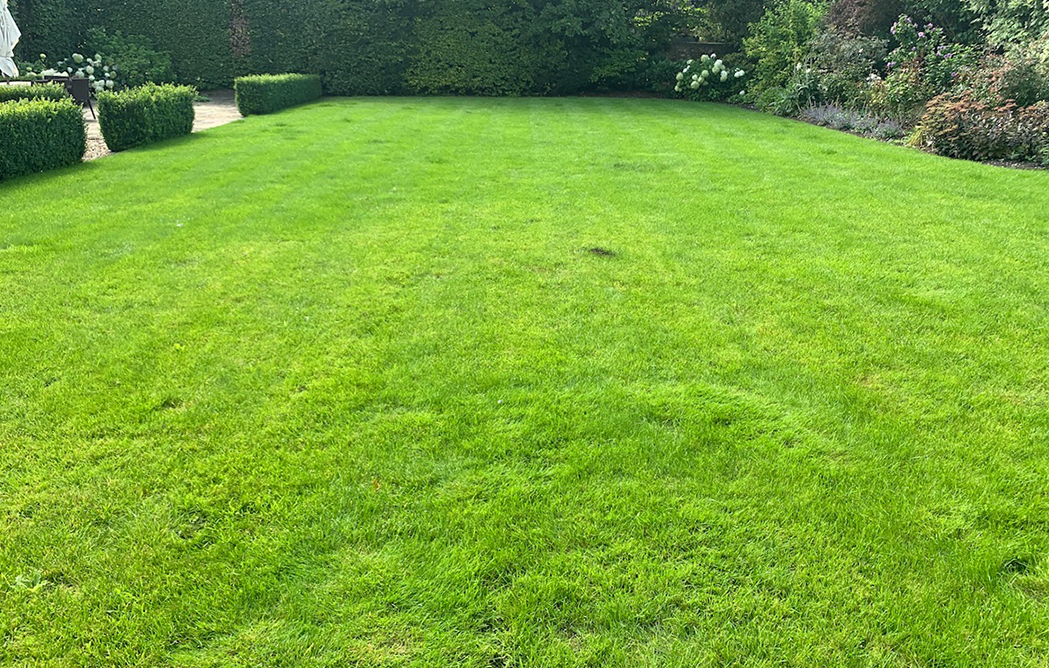
When is the best time to repair a drought-damaged lawn?
Autumn is the ideal season. The soil is still warm from summer, but increased rainfall and reduced heat stress create perfect conditions for seed to germinate and establish. Acting now gives the lawn a head start before winter.
How can I tell if my lawn is dormant or dead?
Try the “tug test” on a dry patch—if it resists being pulled and the crown shows a little green, it’s likely dormant and recoverable. If it breaks off easily and is brittle underneath, it may be dead and require restoration.
How do I know if my soil is hydrophobic?
Droplets pool on the surface and take minutes to soak in. Hydrophobic soil repels water, so even heavy rain won’t help. That’s when wetting agents become essential.
Can I seed on top of an existing lawn?
No—seed needs contact with moist soil to germinate. Without aeration, wetting agents, and top dressing, overseeding rarely works.
Will the rain fix my dead lawn?
Unfortunately not. Once the damage is done — roots weakened, bare patches formed, soil compacted — rainfall alone won’t bring the lawn back. Without action, you’ll likely see weeds and moss take hold where grass once grew.
What happens if I do nothing?
The lawn will remain thin and open, inviting further problems. Drought-stressed areas are more vulnerable to moss invasion, weed encroachment, and disease. Over time, bare patches increase, and the soil becomes even harder to work with.
What’s the best watering schedule after renovation work?
Keep the seedbed lightly moist (not soaked) until seedlings reach 5 cm. Water early in the morning, avoiding midday heat and evening dew.
How high should I mow after recovery?
Keep your mower at its highest setting or just remove the top third of blades until the grass has a chance to strengthen.
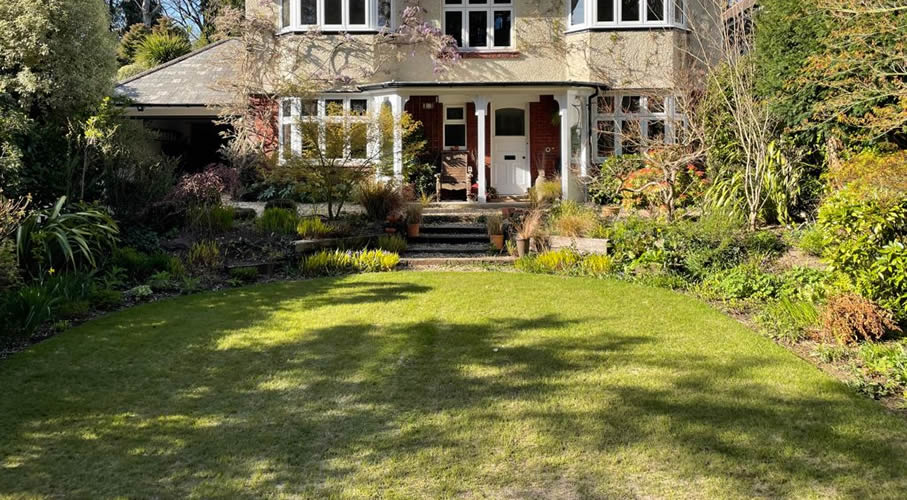
Before lawn renovation
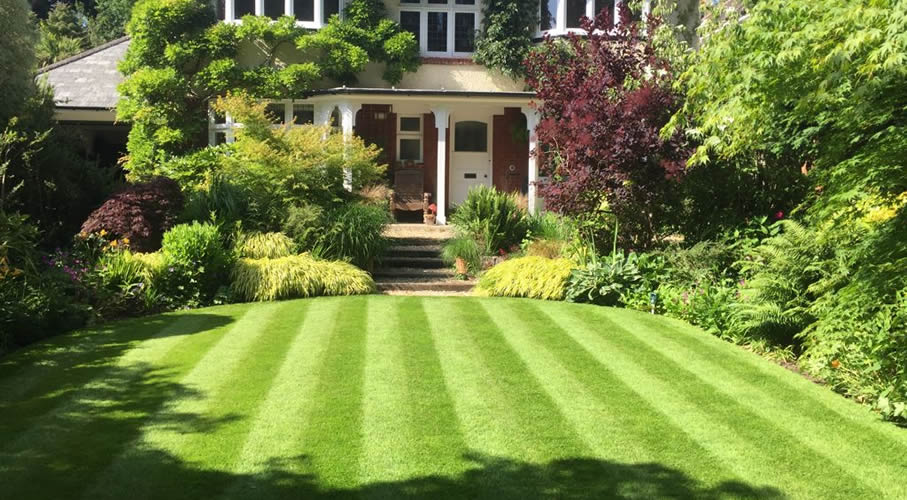
Bring your lawn back to beauty
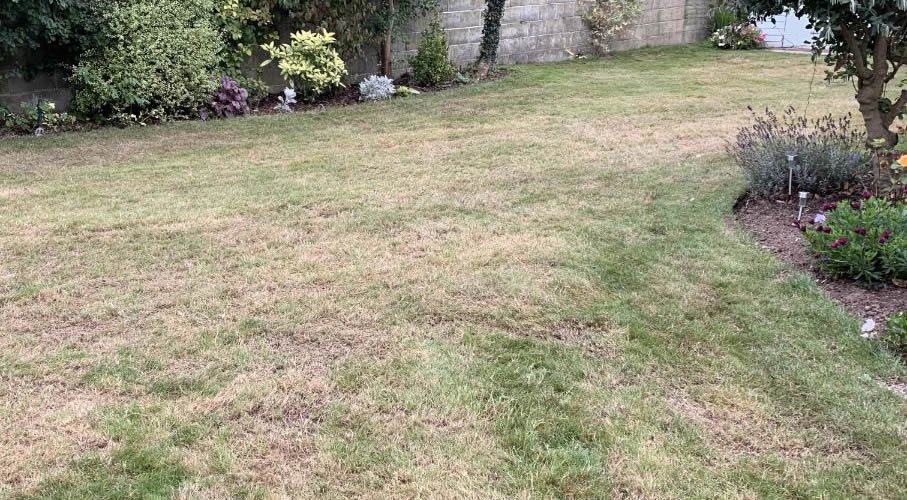
Before lawn renovation
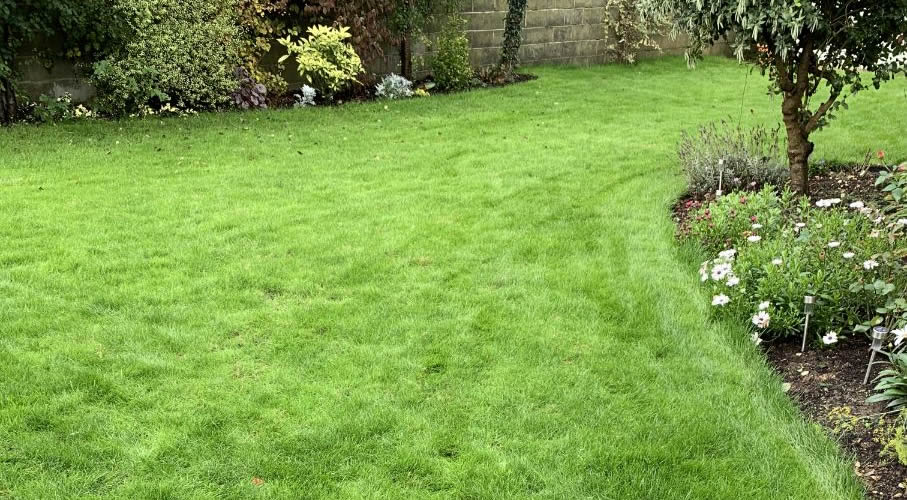
Professional services deliver a professional result

 Established 2016
Established 2016



